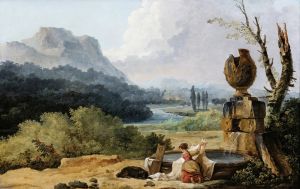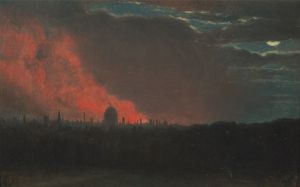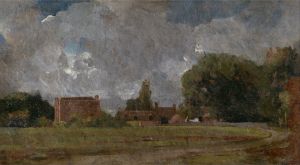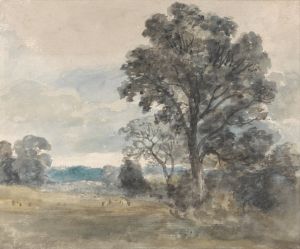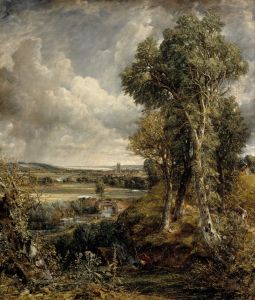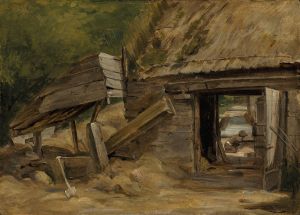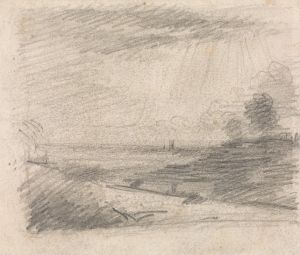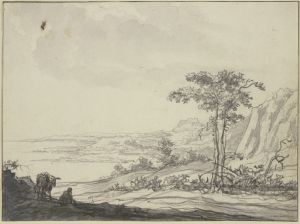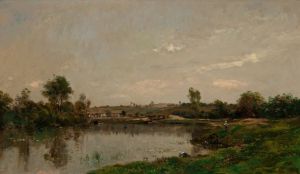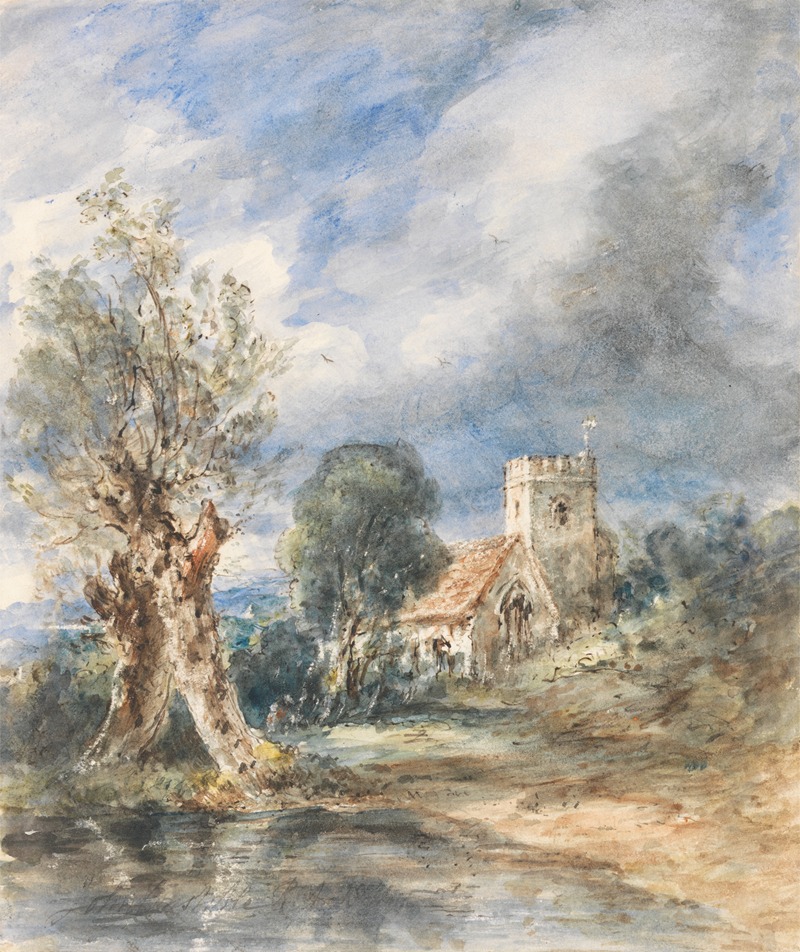
Stoke Poges Church
A hand-painted replica of John Constable’s masterpiece Stoke Poges Church, meticulously crafted by professional artists to capture the true essence of the original. Each piece is created with museum-quality canvas and rare mineral pigments, carefully painted by experienced artists with delicate brushstrokes and rich, layered colors to perfectly recreate the texture of the original artwork. Unlike machine-printed reproductions, this hand-painted version brings the painting to life, infused with the artist’s emotions and skill in every stroke. Whether for personal collection or home decoration, it instantly elevates the artistic atmosphere of any space.
Stoke Poges Church by John Constable is an evocative painting created by the renowned English Romantic painter, John Constable. Known for his landscape paintings, Constable's works often capture the serene beauty of the English countryside, and this particular painting is no exception. The artwork depicts the St. Giles' Church located in the village of Stoke Poges, Buckinghamshire, England. This church is famously associated with the poet Thomas Gray, who wrote "Elegy Written in a Country Churchyard," and is believed to have been inspired by the churchyard of St. Giles.
John Constable was born in 1776 in East Bergholt, Suffolk, and is celebrated for his dedication to painting natural landscapes. His works are characterized by their attention to detail, use of light, and the ability to convey the atmosphere of the English countryside. Constable's paintings often reflect his deep appreciation for nature and his desire to capture its beauty on canvas.
The painting of Stoke Poges Church is a testament to Constable's skill in portraying the tranquil and picturesque settings of rural England. The artwork captures the church amidst a lush landscape, with trees and greenery surrounding the historic building. Constable's use of light and shadow adds depth to the scene, creating a sense of realism and inviting the viewer to appreciate the peacefulness of the setting.
St. Giles' Church itself is a historical structure with origins dating back to the 12th century. It has undergone various modifications over the centuries, but its charm and historical significance remain intact. The church is a Grade I listed building, recognized for its architectural and cultural importance. Its connection to Thomas Gray and his famous elegy adds to its cultural heritage, making it a site of literary pilgrimage.
Constable's painting of Stoke Poges Church is not only a representation of a specific location but also an embodiment of the Romantic era's fascination with nature and the sublime. The Romantic movement, which emerged in the late 18th century, emphasized emotion, individualism, and a deep connection to nature. Constable's work aligns with these themes, as he sought to capture the essence of the natural world and evoke an emotional response from the viewer.
Throughout his career, Constable faced challenges in gaining recognition for his work. While he achieved some success in England, it was in France where his paintings were particularly well-received, influencing the Barbizon School and later the Impressionists. Today, Constable is regarded as one of the greatest landscape painters in art history, and his works continue to be celebrated for their beauty and technical mastery.
Stoke Poges Church by John Constable remains an important piece within his body of work, exemplifying his ability to capture the serene beauty of the English landscape. The painting serves as a visual homage to a historic site and reflects Constable's enduring legacy as a master of landscape painting.






